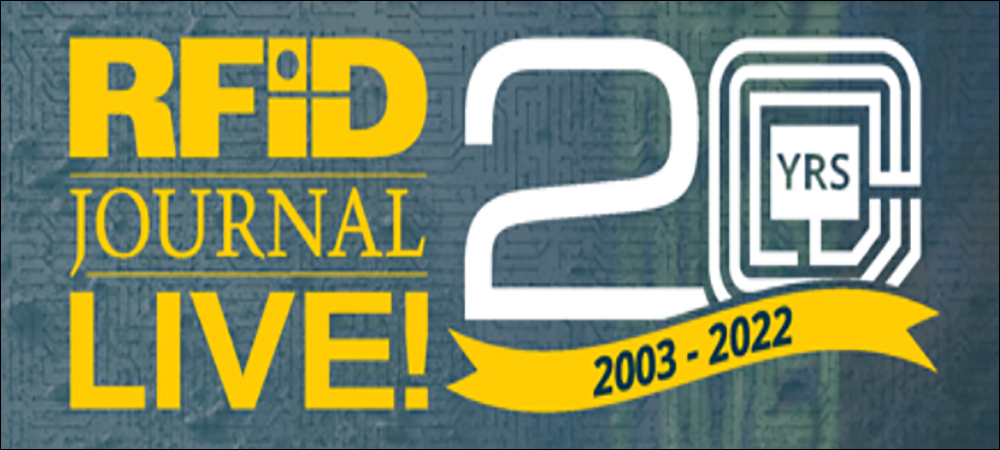- Passive Sensor Data via Phone or Beacon
- Users Can Design Solutions with Starter Kit
- Diversity of Challenges and Solutions
Bluetooth Low Energy (BLE) technology company Wiliot is inviting businesspeople and technology experts to roll up their sleeves and start building passive BLE sensor-based solutions to their own challenges at a workshop being held next week. The Battery-Free Bluetooth Tagging Workshop, taking place in Las Vegas at RFID Journal LIVE! 2022, is aimed at teaching participants how to employ BLE technology to capture and manage data to solve their business problems. The workshop will be offered on Wednesday, May 18, from 1:45 PM to 4:40 PM.
The half-day event is aimed at those who have little experience with BLE technology, as well as those who may have a background in RFID and may even install such solutions for customers. Wiliot suggests BLE technology may provide an alternative to some traditional RFID or sensor-based real-time location systems (RTLS). The company makes passive BLE tags the size of a postage stamp, which act like a computer with a built-in Arm processor and a Bluetooth radio, as well as energy-harvesting functionality to capture and employ power from RFID or BLE transmissions.
Passive Sensor Data via Phone or Beacon

Steve Statler
The device can sense temperature or moisture levels, then communicate those measurements to cloud-based servers via a Bluetooth infrastructure, such as smartphones or BLE beacons. That means tags on goods in a supply chain, for instance—especially perishable goods, such as produce or pharmaceuticals—can be tracked in real time, with data that includes a product’s identity and location, along with the sensor readings, without requiring batteries.
Wiliot previously conducted a full-day workshop at RFID Journal LIVE! 2017 related to Bluetooth tagging and BLE beacons, according to Steve Statler, the company’s senior VP of marketing. This latest workshop, however, will be practical, hands-on and relatively short. “We’re going to take people from zero to hands-on in half a day,” he says, “using this latest Bluetooth auto-ID technology.” He hopes to see beginners at the workshop, as well as more experienced attendees.
Some, Statler says, will need to understand the building blocks for solutions, in addition to the technology’s limitations and strengths. “It will also be a chance for more experienced students to talk with the subject-matter experts who will be on hand,” he adds. Wiliot will have its own personnel onsite, along with representatives of its partner companies, including Avery Dennison Smartrac and Energous. Avery Dennison will compare BLE to RFID and NFC so attendees can decide which tool is best for their applications.
Users Can Design Solutions with Starter Kit
The Battery-Free Bluetooth Tagging Workshop will include a starter kit that participants can take home with them, once they have built a system able to demonstrate a use case of interest. Since Wiliot released its starter kit for new developers and users, Statler says, “We have seen hundreds of companies buying it. The people buying those kits vary from a solid core of ISVs [independent software vendors] and solution providers,” whose background may be in the RFID, Internet of Things (IoT) or BLE markets.
Kits are also in use among enterprise users, ecommerce and logistics providers, as well as healthcare, retail and consumer goods companies. “The applications are endless,” Statler states, “which is why this show is so important to us. We have to work with partners if we are to address the different market spaces and use cases.”
According to Statler, those who already offer technology-based solutions can gain from the workshop by better understanding the use cases their customers may have. For participants that may already be steeped in RFID, he says, Wiliot intends to explain how a passive BLE sensor tag relates to other Bluetooth devices. That could include the differences between Bluetooth use in a car radio and on a phone.
Wiliot will explain the basic differences between the various building blocks—presence, proximity and location sensing—and all things that people need to think about when seeking a solution to a business problem. One real-world application that will be on display is a BLE-tagged coffee cup. By using the cup within range of BLE beacons or BLE-enabled phones, Statler says, a network can capture data about the coffee’s temperature and the cup’s fill level.
Existing customers of Wiliot’s technology have a broad spectrum of applications, Statler says, and he expects the same will be true for workshop attendees. Many customers currently use the technology to manage the locations and conditions of products and assets for retail, healthcare and pharmaceutical companies. “The interest in cloud-connected passive BLE tags spans multiple industries,” he says, often for optimizing manufacturing, distribution, retail and recycling.
“One of the sweet spots has been supply chain,” Statler states, “which is important to all industries, especially these days.” Some of the largest grocery stores in the world are now testing or deploying the technology to manage the freshness of the products they receive and sell, while cold chain traceability has been another common use case.
Diversity of Challenges and Solutions
Statler looks forward to seeing the diversity of use cases or challenges that attendees may bring to the program. “We see our tags being built into vaccine vials to measure fill level, temp and dilution,” he notes, while BLE tags could help apparel retail companies track the location of a specific product, size or color. Plastic crates or returnable transport items can enable greater supply chain visibility, while also preventing loss. Bluetooth tags are even being added to packages of salad, he reports, and are being read inside Japanese consumers’ refrigerators to remind them when to use the product before it goes bad.
Statler says he’ll be happy if, at the end of the workshop, attendees leave with confidence in what can be done with BLE and how to design a solution, along with the enthusiasm to get it done. When they return to their place of work, he adds, they will be ready “to build something that will make the world better.” That could include making a supply chain more efficient, reducing a product’s carbon footprint or increasing the shelf life of produce.
Other applications could include making medicine safer and more effective for patients, as well as improving the quality of clothing for a circular economy. “Or maybe just create something that will educate or inspire a colleague to do those things,” Statler says.
Key Takeaways:
- By gaining hands-on experience with passive BLE, workshop attendees can begin imagining and building solutions to address real-world problems.
- The use of the Wiliot sticker tag with sensor functionality provides an alternative to other RFID and IoT solutions, at a relatively low cost.
Exhibitors at RFID Journal LIVE! 2022 will offer BLE-based tagging solutions. To learn more, visit the event’s website.


